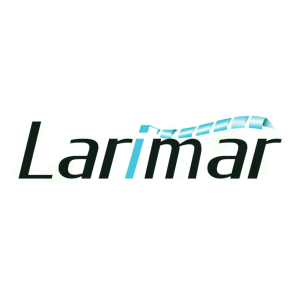Larimar Therapeutics Reports Third Quarter 2020 Operating and Financial Results
Rhea-AI Summary
Larimar Therapeutics (Nasdaq:LRMR) reported its Q3 2020 results, showcasing progress in clinical trials and financial stability. The Phase 1 trials for CTI-1601, aimed at treating Friedreich’s ataxia, are set to deliver topline data in 1H 2021 following delays due to COVID-19. The company holds $102.3 million in cash and equivalents. Despite a net loss of $10.3 million, down from $8.6 million year-over-year, R&D expenses decreased to $6.9 million. The European Commission granted CTI-1601 orphan drug designation, enhancing regulatory support.
Positive
- Phase 1 trials for CTI-1601 on track for topline data in 1H 2021
- Received orphan drug designation from the European Commission
- Cash and equivalents of $102.3 million as of September 30, 2020
- Decrease in R&D expenses to $6.9 million compared to $8.0 million in Q3 2019
Negative
- Net loss increased to $10.3 million from $8.6 million year-over-year
- General and administrative expenses surged to $3.4 million from $0.6 million in Q3 2019
News Market Reaction 1 Alert
On the day this news was published, LRMR declined 6.12%, reflecting a notable negative market reaction.
Data tracked by StockTitan Argus on the day of publication.
Phase 1 trials evaluating CTI-1601 as a treatment for Friedreich’s ataxia on track for topline data in 1H 2021
Received orphan drug designation for CTI-1601 from the European Commission
Cash, cash equivalents, and marketable securities of
BALA CYNWYD, Pa., Nov. 10, 2020 (GLOBE NEWSWIRE) -- Larimar Therapeutics, Inc. (Nasdaq:LRMR), a clinical-stage biotechnology company focused on developing treatments for complex rare diseases, today reported its third quarter 2020 operating and financial results.
“I am very pleased with the progress Larimar has made over the past few months, as we achieved key clinical, regulatory, and corporate milestones that have left us well positioned for continued growth,” said Carole Ben-Maimon, MD, President and Chief Executive Officer of Larimar Therapeutics. “In the third quarter, we continued to advance our lead program in development for Friedreich’s ataxia (FA), resuming our Phase 1 trials evaluating CTI-1601 in patients with FA. Though the trials were delayed due to the impact of the COVID-19 pandemic, they are now on track for topline results in the first half of 2021.”
Dr. Ben-Maimon continued, “Alongside this clinical achievement, we also complemented previous regulatory designations from the U.S. Food and Drug Administration (FDA) with an orphan drug designation from the European Commission and strengthened Larimar’s leadership team with the formation of a Scientific Advisory Board (SAB). Members of the SAB are key opinion leaders in the fields of rare disease, pediatrics, and mitochondrial disease who will provide strategic scientific guidance as we build our pipeline.”
Third Quarter and Subsequent Highlights
- In July 2020, Larimar resumed its Phase 1 clinical trials to evaluate the safety and tolerability of CTI-1601 for the treatment of FA with the dosing of its third cohort. The trials were previously delayed due to the impact of the COVID-19 pandemic. Topline data from the trials are expected in the first half of 2021.
- In August 2020, the European Commission granted an orphan drug designation for CTI-1601 for the treatment of FA. This designation complements previously received Orphan Drug, Fast Track, and Rare Pediatric Disease designations from the FDA.
- In October 2020, Larimar announced the formation of its SAB. The SAB will provide strategic scientific guidance to company management and is comprised of key opinion leaders in the fields of rare disease, pediatrics, and mitochondrial disease. Members of the SAB include: Russell (Rusty) Clayton, DO; Marni J. Falk, MD; Giovanni Manfredi, MD, PhD; Mark Payne, MD; and Marshall Summar, MD.
Third Quarter 2020 Financial Results
As of September 30, 2020, the Company had cash, cash equivalents, and marketable debt securities totaling
The Company reported a net loss for the third quarter of 2020 of
Research and development expenses for the third quarter of 2020 were
General and administrative expenses for the third quarter of 2020 were
About CTI-1601
CTI-1601 is a recombinant fusion protein intended to deliver human frataxin into the mitochondria of patients with Friedreich’s ataxia (FA) who are unable to produce enough of this essential protein. Currently in Phase 1 clinical trials in the U.S., CTI-1601 has been granted Rare Pediatric Disease designation, Fast Track designation and Orphan Drug designation by the U.S. Food and Drug Administration (FDA) and orphan drug designation by the European Commission. Topline results from the Phase 1 clinical program are planned for the first half of 2021.
About Friedreich’s ataxia
Friedreich’s ataxia (FA) is a rare, progressive, multi-symptom genetic disease that typically presents in mid-childhood and affects the functioning of multiple organs and systems. The most common inherited ataxia, FA is a debilitating neurodegenerative disease resulting in multiple symptoms including progressive neurologic and cardiac dysfunction – poor coordination of legs and arms, progressive loss of the ability to walk, generalized weakness, loss of sensation, scoliosis, diabetes, and cardiomyopathy as well as impaired vision, hearing, and speech. FA affects an estimated 4,000-5,000 individuals living in the United States and approximately 20,000 in the European Economic Area and United Kingdom. FA results from a deficiency of the mitochondrial protein, frataxin (FXN), which is found in cells throughout the body. To date, there are no medical treatment options approved for patients with FA.
About Larimar Therapeutics
Larimar Therapeutics, Inc. (Nasdaq:LRMR), is a clinical-stage biotechnology company focused on developing treatments for complex rare diseases. The company’s lead compound, CTI-1601, is currently being evaluated in a Phase 1 clinical program in the U.S. as a potential treatment for Friedreich’s ataxia (FA). Larimar also plans to use its intracellular delivery platform to design other fusion proteins to target additional rare diseases characterized by deficiencies in intracellular bioactive compounds. For more information, please visit: https://larimartx.com.
Forward-Looking Statements
This press release contains forward-looking statements that are based on Larimar’s management’s beliefs and assumptions and on information currently available to management. All statements contained in this release other than statements of historical fact are forward-looking statements, including but not limited to statements regarding Larimar’s ability to develop and commercialize CTI-1601 and other planned product candidates, Larimar’s planned research and development efforts, and other matters regarding Larimar’s business strategies, use of capital, results of operations and financial position, and plans and objectives for future operations.
In some cases, you can identify forward-looking statements by the words “may,” “will,” “could,” “would,” “should,” “expect,” “intend,” “plan,” “anticipate,” “believe,” “estimate,” “predict,” “project,” “potential,” “continue,” “ongoing” or the negative of these terms or other comparable terminology, although not all forward-looking statements contain these words. These statements involve risks, uncertainties and other factors that may cause actual results, performance or achievements to be materially different from the information expressed or implied by these forward-looking statements. These risks, uncertainties and other factors include, among others, the success, cost and timing of Larimar’s product development activities, studies and clinical trials; the ongoing impact of the COVID-19 pandemic on Larimar’s clinical trial timelines, ability to raise additional capital and general economic conditions; Larimar’s ability to optimize and scale CTI-1601’s manufacturing process; Larimar’s ability to obtain regulatory approval for CTI-1601 and future product candidates;; Larimar’s ability to develop sales and marketing capabilities, whether alone or with potential future collaborators, and successfully commercialize any approved product candidates; Larimar’s ability to raise the necessary capital to conduct its product development activities; and other risks described in the filings made by the Company with the Securities and Exchange Commission (SEC), including but not limited to Larimar’s periodic reports, including the annual report on Form 10-K, quarterly reports on Form 10-Q and current reports on Form 8-K, filed with or furnished to the Securities and Exchange Commission and available at www.sec.gov. These forward-looking statements are based on a combination of facts and factors currently known by Larimar and its projections of the future, about which it cannot be certain. As a result, the forward-looking statements may not prove to be accurate. The forward-looking statements in this press release represent views as of the date hereof. Larimar undertakes no obligation to update any forward-looking statements for any reason, except as required by law.
Investor Contact:
Joyce Allaire
LifeSci Advisors
(212) 915-2569
jallaire@lifesciadvisors.com
Media Contact:
Gina Cestari
6 Degrees
(917) 797-7904
gcestari@6degreespr.com
LARIMAR THERAPEUTICS, INC.
CONDENSED CONSOLIDATED BALANCE SHEETS
(Unaudited)
| September 30, | December 31, | |||||||
| 2020 | 2019 | |||||||
| Assets | ||||||||
| Current assets: | ||||||||
| Cash and cash equivalents | $ | 101,308 | $ | 1,009 | ||||
| Marketable debt securities | 1,001 | — | ||||||
| Prepaid expenses and other current assets | 5,507 | 3,741 | ||||||
| Total current assets | 107,816 | 4,750 | ||||||
| Property and equipment, net | 630 | 274 | ||||||
| Operating lease right-of-use assets | 4,094 | 87 | ||||||
| Restricted cash | 1,339 | — | ||||||
| Other assets | 78 | 90 | ||||||
| Total assets | $ | 113,957 | $ | 5,201 | ||||
| Liabilities and Stockholders’ Equity (Deficit) | ||||||||
| Current liabilities: | ||||||||
| Accounts payable | $ | 1,269 | $ | 3,539 | ||||
| Accrued expenses | 3,384 | 2,259 | ||||||
| Operating lease liabilities, current | 525 | 97 | ||||||
| Total current liabilities | 5,178 | 5,895 | ||||||
| Operating lease liabilities | 6,138 | — | ||||||
| Total liabilities | 11,316 | 5,895 | ||||||
| Commitments and contingencies (See Note 9) | ||||||||
| Stockholders’ equity: | ||||||||
| Preferred stock; as of September 30, 2020 and December 31, 2019; no shares issued and outstanding as of September 30, 2020 and December 31, 2019 | — | — | ||||||
| Common stock, $ par value per share; shares authorized as of September 30, 2020 and December 31, 2019; and shares issued and outstanding as of September 30, 2020 and December 31, 2019, respectively | 15 | 6 | ||||||
| Additional paid-in capital | 154,038 | 22,432 | ||||||
| Accumulated deficit | (51,410 | ) | (23,132 | ) | ||||
| Accumulated other comprehensive loss | (2 | ) | — | |||||
| Total stockholders’ equity (deficit) | 102,641 | (694 | ) | |||||
| Total liabilities and stockholders’ equity (deficit) | $ | 113,957 | $ | 5,201 | ||||
LARIMAR THERAPEUTICS, INC.
CONDENSED CONSOLIDATED STATEMENTS OF OPERATIONS
(In thousands, except share and per share data)
(Unaudited)
| Three Months Ended September 30, | Nine Months Ended September 30, | |||||||||||||||
| 2020 | 2019 | 2020 | 2019 | |||||||||||||
| Operating expenses: | ||||||||||||||||
| Research and development | $ | 6,919 | $ | 8,034 | $ | 20,833 | $ | 15,384 | ||||||||
| General and administrative | 3,416 | 594 | 7,575 | 1,672 | ||||||||||||
| Total operating expenses | 10,335 | 8,628 | 28,408 | 17,056 | ||||||||||||
| Loss from operations | (10,335 | ) | (8,628 | ) | (28,408 | ) | (17,056 | ) | ||||||||
| Other income, net | 61 | — | 130 | — | ||||||||||||
| Net loss | $ | (10,274 | ) | $ | (8,628 | ) | $ | (28,278 | ) | $ | (17,056 | ) | ||||
| Net loss per share, basic and diluted | $ | (0.64 | ) | $ | (1.42 | ) | $ | (2.69 | ) | $ | (2.80 | ) | ||||
| Weighted average common shares outstanding, basic and diluted | 15,984,609 | 6,091,250 | 10,505,826 | 6,091,250 | ||||||||||||







